INTRODUCTION
In Nigeria, unemployed graduates and poor peasant farmers who desire to make both ends meet have always fallen back extensively on livestock management.
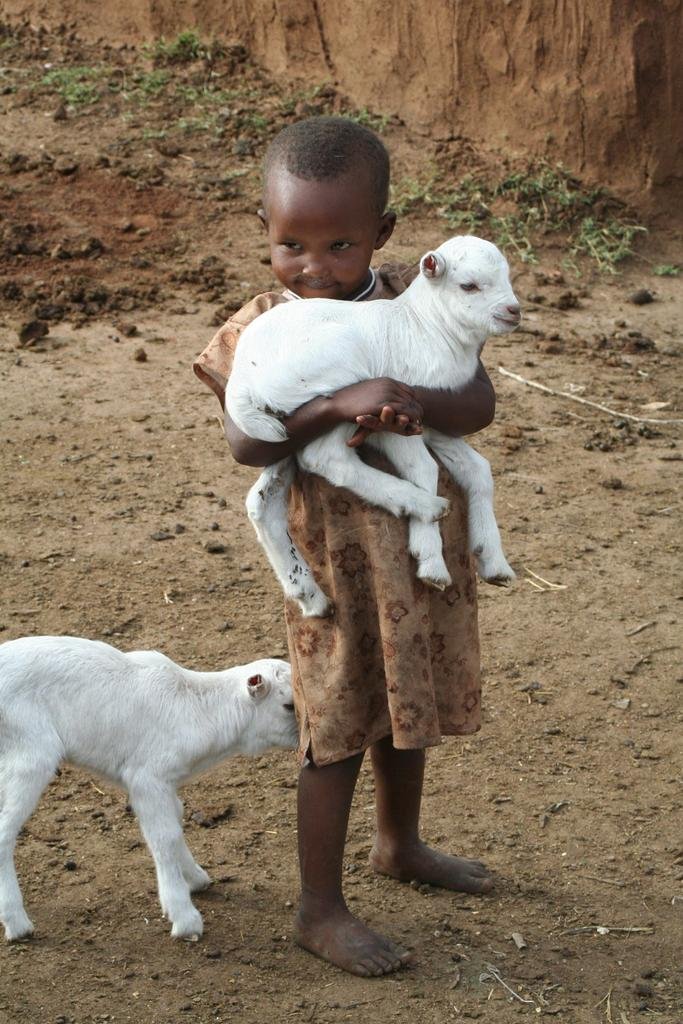
Image Source licenced under Creative commons.
Mostly, livestock farming in the rural areas of Nigeria is achievable due to low capital requirements, yet it yields high profits in the end.
Livestock farming has become a lucrative business especially in the north region of Nigeria due to the benefits and high-profit farmers achieve.
Almost every family living in the local province of Nigeria practices livestock farming because many tasks are not needed in the provision and management of these animals.
Hence, everybody has at least one or two livestock that generates income for them.
From observation, Nigerians have so many reasons for practicing livestock management today. Thus, some of these reasons are for meat (food) production.
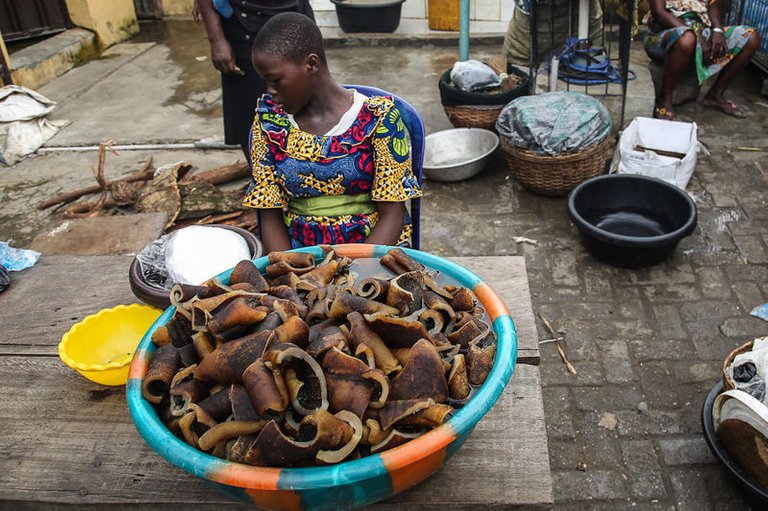
That is called pomo meat gotten from cow skin, it is very nutritious and can be used in different meals
source Wikipedia by CC BY SA 4.0
An average multitude of Nigerians consumes meat in a higher proportion and this justification has stimulated the high demand for meat production thus enriching the revenue of farmers who are immersed in livestock management.
Another good explanation for bringing up livestock in Nigeria is for the skin products, usually obtained from ruminant animals like Cattle, goat sheep, etc. For the milk production, for festivals and sacrificial objectives, for earnings, employment, educational purposes like teaching and research, etc.
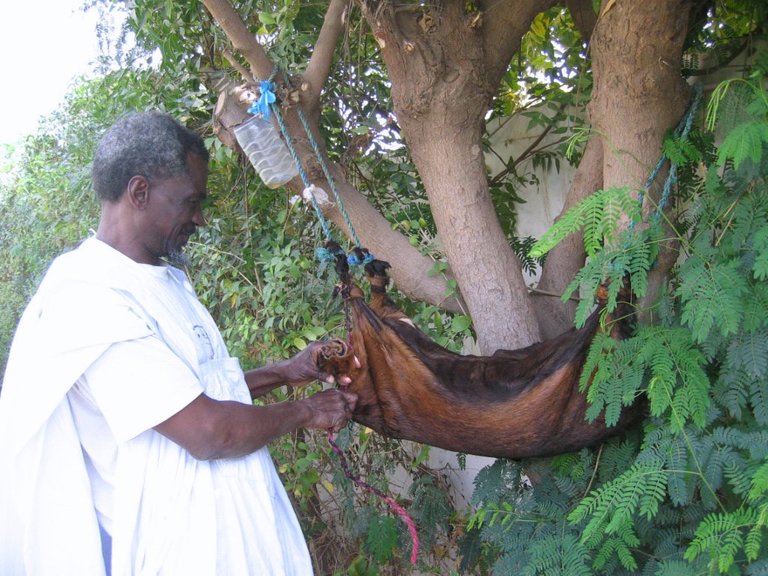
This bag is made from goat skin
source Wikipedia by CC BY SA 3.0.
In Nigeria, the most popular reared livestock includes cattle, goat sheep pig, and birds, but in this publication, I would like us to carefully discuss goat rearing and management.
To start with, the goat a ruminant animal is hallowed horned categorized in the family of Bovidea of the germs Capra.
The reason, why most people here prefer goats over other ruminants in terms of livestock farming, is that goats can survive unfavorable environmental conditions and they are tough and hardy animals.
Again, less care is rendered to them and they can still feed on their own.
They can browse many forage plants. Hence, the cost of producing goats is cheap. Goat is another class of ruminant that produces kids twice a year and they are mostly reared on the extensive system of management.
There are different species of goats found in Nigeria and these include; the Sokoto Red, Bornu Red, West African long-legged goat, Nubian, Africa dwarf goat, Bantu Anglo-Nubian, Alpine, Sanneu, Kano brown, etc.

Sokoto Red goat
source Wikipedia by CC BY SA 4.0
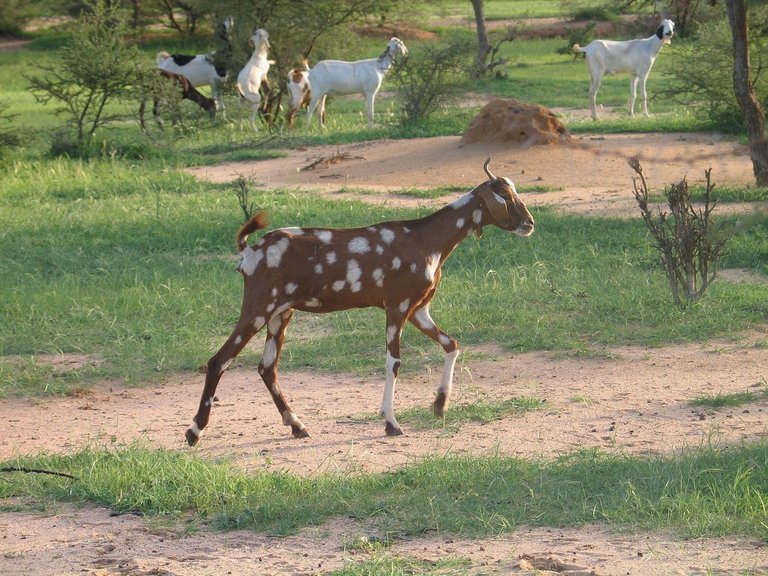
African long legged goat
Pixabay
Systems of goat rearing in Nigeria.
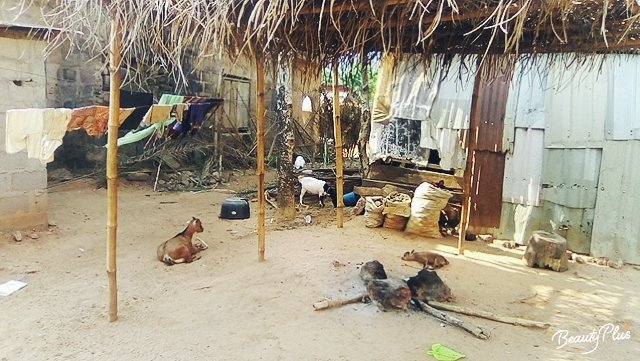
If you have been to Nigeria, you would probably learn some unique systems of goat rearing in this region.
Naturally, we have three major systems of goat rearing based on the level of one's financial capacity.
These three systems are recognized to be extensive, semi-intensive, and intensive systems. I am going to explain the systems one after the other, just read till the end.
EXTENSIVE SYSTEM.
Under this system, the goat is allowed to roam around in search of pasture and water. Individuals who are not much interested in goat rearing are those that practice this type of system management. Thus, the goat is reared for its meat and not for commercial goals.
The goats can thrive on any edible material and browse even in extreme conditions of drought and rain.

The goat takes absolute care of itself in any condition.
The owner of the goats renders little care as no good housing, feeding, health care are provided for the animal. The cost of Labour and capital investment is very low, hence anybody can opt for this system of rearing.
Although this system is cheap, it is not easy to implement a controlled breeding program. Pests are poorly controlled hence the animal is prone to diseases. Since no good house is provided for the goat, it may fell victim to thieves and predators.
Furthermore, there is also indiscriminate mating and the goat do give birth to the young ones in the open field.

Because of inadequate control, the goat generally destroys cultivated crops in search of food thereby causing community disputes.
The productivity of the goat is very poor in the case of meat and milk production. The goat always looks skinny because of too much stress it undergoes.
SEMI INTENSIVE SYSTEM
In this type of rearing system, the goats are provided with a house only.
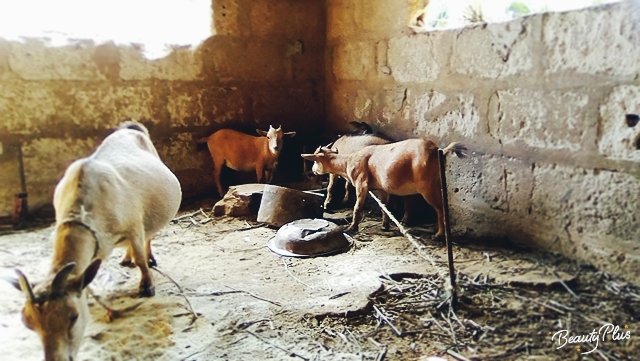
Example of semi-intensive management
The house supports the animal to protect themselves against unfavorable conditions like adverse weather. The house is constructed with material that can permit the free circulation of air.
However, there is no absolute control of the goat as the goat can move out from the pan to graze in the pasture which is fenced around the goat house.
Sometimes, feeds like palm fronts, grasses, and domestic wastes as supplied to the goats.

This is the type of building provided under semi-intensive management
Little initial capital outlay is needed in this system but it requires large level requirements and diseases and parasites and slightly controls.
The semi-intensive system of goat rearing is the best method in Nigeria. In addition to the roughage, they feed on by rotational grazing, supplementary yam, banana peelings, and other domestic products, salt licks which is rich in minerals are vitamins as well as cool and Clean water
are provided for the goat regularly.
INTENSIVE SYSTEM
This system requires that the goat should be confined with a good structural building with zero access to grazing.
Not everyone in Nigeria can afford and maintain this type of system as much capital is needed to layout a good intensive system.
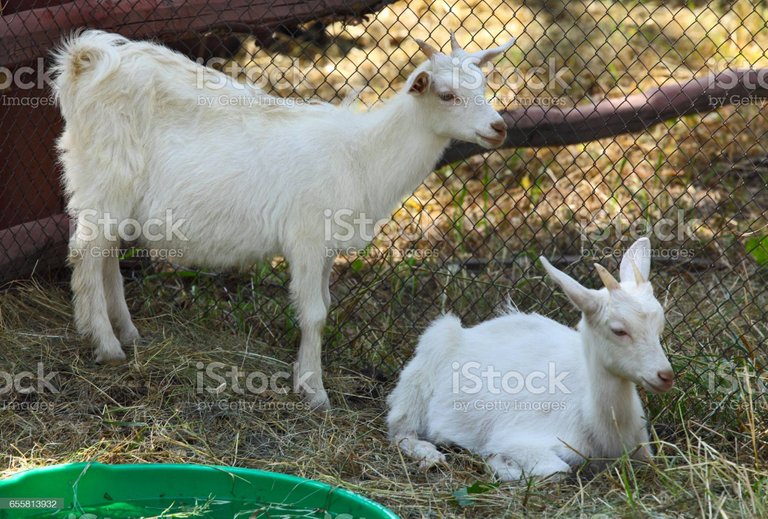
Example of intensive system management
Source
Practicing an intensive system requires a high cost of labor because the owner tends to care and Carter for the animals. As a result of this, balanced feed in terms of concentrates forages plants (soilage), as well as salt lick to provide the necessary minerals and vitamins, are provided.
Zero-grazing is also adopted in this system where grasses and legumes are cut and take to the goat in their pans. Rotational grazing can also be practiced, whereby goats are moved about in padlocks as they grass in the pasture.
However, the good thing about this system of rearing is that there is a high rate of productivity and diseases can easily be controlled, thus good records are kept and the rate of mortality is reduced.
Rich farmers are the one that practices this type of system rearing and their yearly profits are demanding.
FEEDING IN GOATS
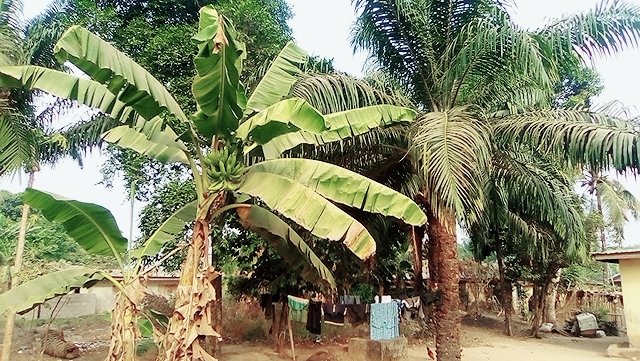
Those are banana and palm tree, their leaves are given to goats as feed
Goats as ruminant animals browse extensively on fresh grasses that are, roughages. People who are living in the Southern part of Nigeria and are involved in goat rearing easily access grasses and some specific plant leaves for their goats.
But fresh grasses become inaccessible during every harmattan season. This period also recognized as the dry season in Nigeria is when there would be no rain for some particular months.

Grasses get dried during harmattan season in Nigeria
It usually starts in November and ends in February.
During this time, the soil gets dried up because there is always a constantly fast rate of evaporation which is evoked by the hot sun.

Dried grasses
Hence, grasses, because they can no longer absorb water from the soil get dried thus making life difficult for ruminants in terms of feeds derives from the fresh grasses.
At this point, the goats are provided with household and kitchen waste as food. The husbandry chooses to feed his or her goat on a concentrated feed from domestic waste.
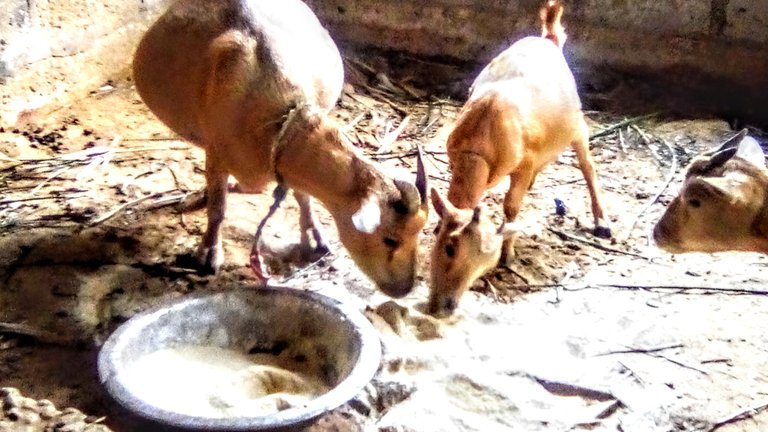
Goats feeding on domestic products
Again, roughages like hay, soilage, straw, and silages are also given to the goats to eat. Hay and straw are known as dry roughages.
The hay is the aerial part of herbage, cut and stored for future use. Although this form of roughage is very difficult to digest because the plants are cut when the crops have been harvested thus, the remainder of the crop is cut, dried, and fed to the goat.
Straw on its own is not a reasonable form of food for animals but because the dry season is characterized by no fresh grass, we then opt for the straw just to sustain the life of the animal until the beginning of the rainy season when there will be fresh leaves and common grasses that can be feed by goat are giants star grass, carpet grass, palm fronts, banana leaves, etc.
Reference
•ESSENTIAL AGRICULTURAL SCIENCE FOR SENIOR SECONDARY SCHOOLS. BY O.A IWENA, ISBN 978-978-52654-9-1
(Note: All images are owned by the author (@jsalvage) except those with separate citation.)
Dear @jsalvage , Did you take all those pictures yourself? It was a very interesting article.
Do you probably do farming and livestock management?
Hello friend, how rae you doing?
Yes, those image without licence are mine. I took the pictures with my mobile phone;Tecno Pop2 f.
I am engaged in livestock management but under extensive and semi-intensive system management 😂
Dear @jsalvage , I am fine! You seem to have a lot of trouble raising livestock every day. Especially the smell of goats is awful.😄
Hahah certainly especially the male ones. Tending such animal can be odious but we just persist because of the benefits we derive from those animals. Between have you ever been to a goat pan before? I was wondering how you know that goats have an irritating smell. 😂
Dear my young friend @jsalvage, In Korea, there are also many individuals who raise cattle, pigs, chickens, and goats. So, everyone knows that in places where livestock are raised, the smell is terrible.
I thought you had a slim body because you worked hard every day. 😄
Hahaha, friend you are very funny. well, I think you are right. Since I'm poor, unfortunately, I am supposed to be slim.. Hilarious right?
Dear my young friend @jsalvage , Have you ever been offended by my jokes? I said that you are healthy because you work hard every day. 😮
Congratulations @jsalvage! You have completed the following achievement on the Hive blockchain and have been rewarded with new badge(s) :
You can view your badges on your board and compare yourself to others in the Ranking
If you no longer want to receive notifications, reply to this comment with the word
STOPThanks for your contribution to the STEMsocial community. Feel free to join us on discord to get to know the rest of us!
Please consider supporting our funding proposal, approving our witness (@stem.witness) or delegating to the @stemsocial account (for some ROI).
Please consider using the STEMsocial app app and including @stemsocial as a beneficiary to get a stronger support.